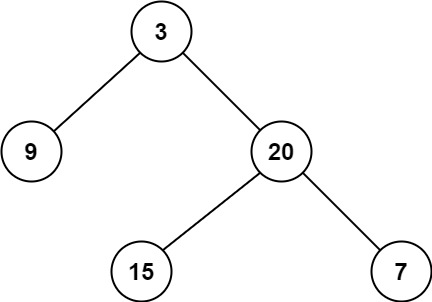C++
Java
Python
Python3
C
C#
JavaScript
Ruby
Swift
Go
Scala
Kotlin
Rust
PHP
TypeScript
Racket
Erlang
Elixir
Dart
monokai
ambiance
chaos
chrome
cloud9_day
cloud9_night
cloud9_night_low_color
clouds
clouds_midnight
cobalt
crimson_editor
dawn
dracula
dreamweaver
eclipse
github
github_dark
gob
gruvbox
gruvbox_dark_hard
gruvbox_light_hard
idle_fingers
iplastic
katzenmilch
kr_theme
kuroir
merbivore
merbivore_soft
mono_industrial
nord_dark
one_dark
pastel_on_dark
solarized_dark
solarized_light
sqlserver
terminal
textmate
tomorrow
tomorrow_night
tomorrow_night_blue
tomorrow_night_bright
tomorrow_night_eighties
twilight
vibrant_ink
xcode
上次编辑到这里,代码来自缓存 点击恢复默认模板
/**
* Definition for a binary tree node.
* struct TreeNode {
* int val;
* TreeNode *left;
* TreeNode *right;
* TreeNode() : val(0), left(nullptr), right(nullptr) {}
* TreeNode(int x) : val(x), left(nullptr), right(nullptr) {}
* TreeNode(int x, TreeNode *left, TreeNode *right) : val(x), left(left), right(right) {}
* };
*/
class Solution {
public:
int minDepth(TreeNode* root) {
}
};
运行代码
提交
golang 解法, 执行用时: 159 ms, 内存消耗: 34.6 MB, 提交时间: 2024-02-20 10:11:25
/**
* Definition for a binary tree node.
* type TreeNode struct {
* Val int
* Left *TreeNode
* Right *TreeNode
* }
*/
// bfs
func minDepth2(root *TreeNode) int {
if root == nil {
return 0
}
queue := []*TreeNode{}
count := []int{}
queue = append(queue, root)
count = append(count, 1)
for i := 0; i < len(queue); i++ {
node := queue[i]
depth := count[i]
if node.Left == nil && node.Right == nil {
return depth
}
if node.Left != nil {
queue = append(queue, node.Left)
count = append(count, depth + 1)
}
if node.Right != nil {
queue = append(queue, node.Right)
count = append(count, depth + 1)
}
}
return 0
}
// dfs
func minDepth(root *TreeNode) int {
if root == nil {
return 0
}
if root.Left == nil && root.Right == nil {
return 1
}
minD := math.MaxInt32
if root.Left != nil {
minD = min(minDepth(root.Left), minD)
}
if root.Right != nil {
minD = min(minDepth(root.Right), minD)
}
return minD + 1
}
func min(x, y int) int {
if x < y {
return x
}
return y
}
python3 解法, 执行用时: 215 ms, 内存消耗: 48.1 MB, 提交时间: 2024-02-20 10:10:19
# Definition for a binary tree node.
# class TreeNode:
# def __init__(self, val=0, left=None, right=None):
# self.val = val
# self.left = left
# self.right = right
class Solution:
def minDepth(self, root: TreeNode) -> int:
if not root:
return 0
que = collections.deque([(root, 1)])
while que:
node, depth = que.popleft()
if not node.left and not node.right:
return depth
if node.left:
que.append((node.left, depth + 1))
if node.right:
que.append((node.right, depth + 1))
return 0
python3 解法, 执行用时: 92 ms, 内存消耗: N/A, 提交时间: 2018-08-27 16:44:40
# Definition for a binary tree node.
# class TreeNode:
# def __init__(self, x):
# self.val = x
# self.left = None
# self.right = None
class Solution:
def minDepth(self, root):
"""
:type root: TreeNode
:rtype: int
"""
if root == None:
return 0
left = self.minDepth(root.left)
right = self.minDepth(root.right)
if min(left, right) == 0:
return max(left, right) + 1
return min(left, right) + 1
